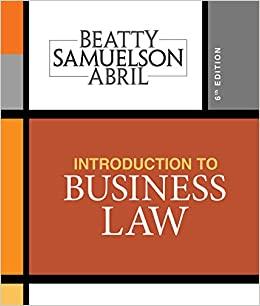
Hello Can someone help me answer this pls?Thanks
When the firm's long run average costs are constant, the firm is in the increasing returns to scale region of production the firm is in the decreasing returns to scale region of production the firm is in the constant returns to scale region of production the firm's LRMC equals its LRAC both (c) and (d) are correct To be a "'natural monopoly" a firm must a. control an essential natural resource input have falling LRMC throughout the range of the market have falling LRAC throughout the range of the market none of the above Cartels usually fall apart because limited information on the part of members of the cartel entry of new rivals members cheat by giving secret discounts insufficient profits compared to independent operations The Rule of Rational Life describes optimal production behavior for competitive firms, but NOT for monopolies. True or False? Marginal revenue product (MRP) is equal to the marginal product (MP) multiplied by the quantity demanded (QP). True or False? The optimal employment of an input occurs when the input's MRP is greater than its price MRP is less than its price MRP is equal to its price MRP is equal to its MFC both (c) and (d) above are correct A competitive market with positive externalities does not produce Qso because marginal social benefits is greater than marginal private benefits marginal social benefits is less than marginal private benefits C marginal social costs is greater than marginal private costs marginal social costs is less than marginal private costs One reason economists object to monopoly is monopolies produce more than Qso to maximize profits monopolies always produces the technically efficient output level monopoly profits end up increasing the wealth of the rich at the expense of the poor d monopolies price their products lower than competitive firms 9. If the average total cost of a product is $10 per unit, average variable costs is $3 per unit and the price of the product is $5 per unit, the firm is losing $15 per unit produced. True or False? 10 If we want to understand the major portion of today's economic activity in an industrial economy, we should look at perfect competition and pure monopoly b. perfect competition and oligopoly C. oligopoly and monopolistic competition d monopolistic competition and monopoly 11. A competitive market for a public good will not produce the allocatingly efficient level of output (i.e., Oso) because of the free rider effect. True or False? 12. If the demand curve of a competitive firm is tangent to (i.e., just touches) the low point on the AVC curve, the firm's profits are the same whether it shuts down or produces. True or False? 13. Monopolistic competition is common in a retail selling farming C. basic manufacturing electric power generation 14. In the short-run, total costs are not zero when output is zero because a marginal costs can be negative at small outputs there are some costs that must be paid regardless of the level of output profits must be paid to stockholders d (a) and (b) above are both correct 15 Wendy can sell six motor homes per week at $20,000 each. If she limits her sales to five homes per week, she can get 522,000 each. Thus, her MR is a equal to her total profits greater than her price PPP less than her price equal to her price 16 One reason economists object to monopoly is a monopolies produce above the allocatingly efficient (i.e., Qso) level monopolies have no supply curve monopolists are polluters d monopolists produce below the Alocalively efficient (i.e., Qso) level 17. Oligopoly occurs when a a few firms sell to a few large buyers h many firms dominate a single market a few firms dominate a single market many firms sell differentiated products








